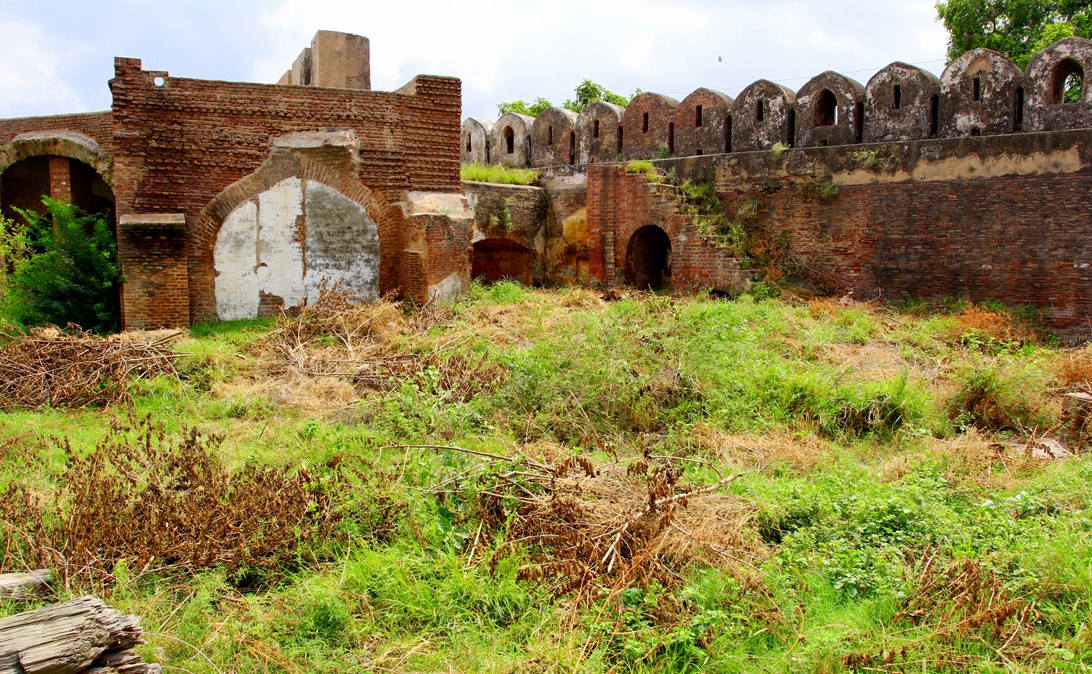

The place you see in the photographs is no desolate tract. It is the most important part of our heritage site, Lahore Fort. As I was coming to the Fort, I read a plaque stating some facts about the Royal Kitchen. I could not recall visiting the place before.
I looked around for someone to ask about the place and saw a man sitting on the edge of a raised platform, holding a card that said, ‘Tourist Guide.’ I walked up to him, learnt that his name was Peter and he had been working as a guide for the past fifteen years at the Fort.
Peter led me to a narrow passage that was covered with waist-high wild grass. I thought for a while of all the snakes and insects lurking beneath those towering wild shrubs.
I was awe struck. It was a beautiful place except in shambles. The roofs of different parts of the building had collapsed. The walls, all built in small bricks, had huge cracks which were a sign of some collision. The majestic arches formed the entire Royal Kitchen area.
I could visualise the splendour of the place in the past with the hustle and bustle of the chefs and helpers cooking food for the kings, queens and the courtiers and carrying it to their private chambers and dining rooms.
I imagined how lively the place would have been with the laughter, jokes, stories and incidents of daily routine. The place must have been hygienic and well maintained in those times. Today, it’s not even in the shape of a relic. It’s badly pleading for maintenance.
Peter told me that the Royal Kitchen was constructed during the reign of Emperor Shah Jahan. It was where the food was prepared along with a huge variety of drinks and sweets. When the Sikh took over the Lahore Fort, the kitchen was damaged like other buildings of the place.
The kitchen was soon converted into a food store room. During the same period, it was used as a stable for horses and other animals.
In 1849, the British made the place into interrogation cells and jails. Around the same, the open verandas were enclosed with bricks. New structures and elements like iron doors and beams were added along with the construction of an upper storey. The upper storey served as offices for policemen. The electricity supply lines, sewage system and water drains were laid during the British period.
After Partition, the Police Department used the place as interrogation cells until late 1980s, when they were handed over to the Archaeology Department. The building of the Royal Kitchen was sabotaged more than ever -- the beams, wooden doors, windows went missing. Perhaps, those were pulled down during the riots. The building was dilapidated and, later, some of its parts were demolished and the offices of Archeology were built in their place.
The Royal Kitchen is not open for tourists. Rather, no one can go there due to the wilderness and over growth of wild plants. It is said that the Walled City of Lahore Authority has some conservation plans for the place.